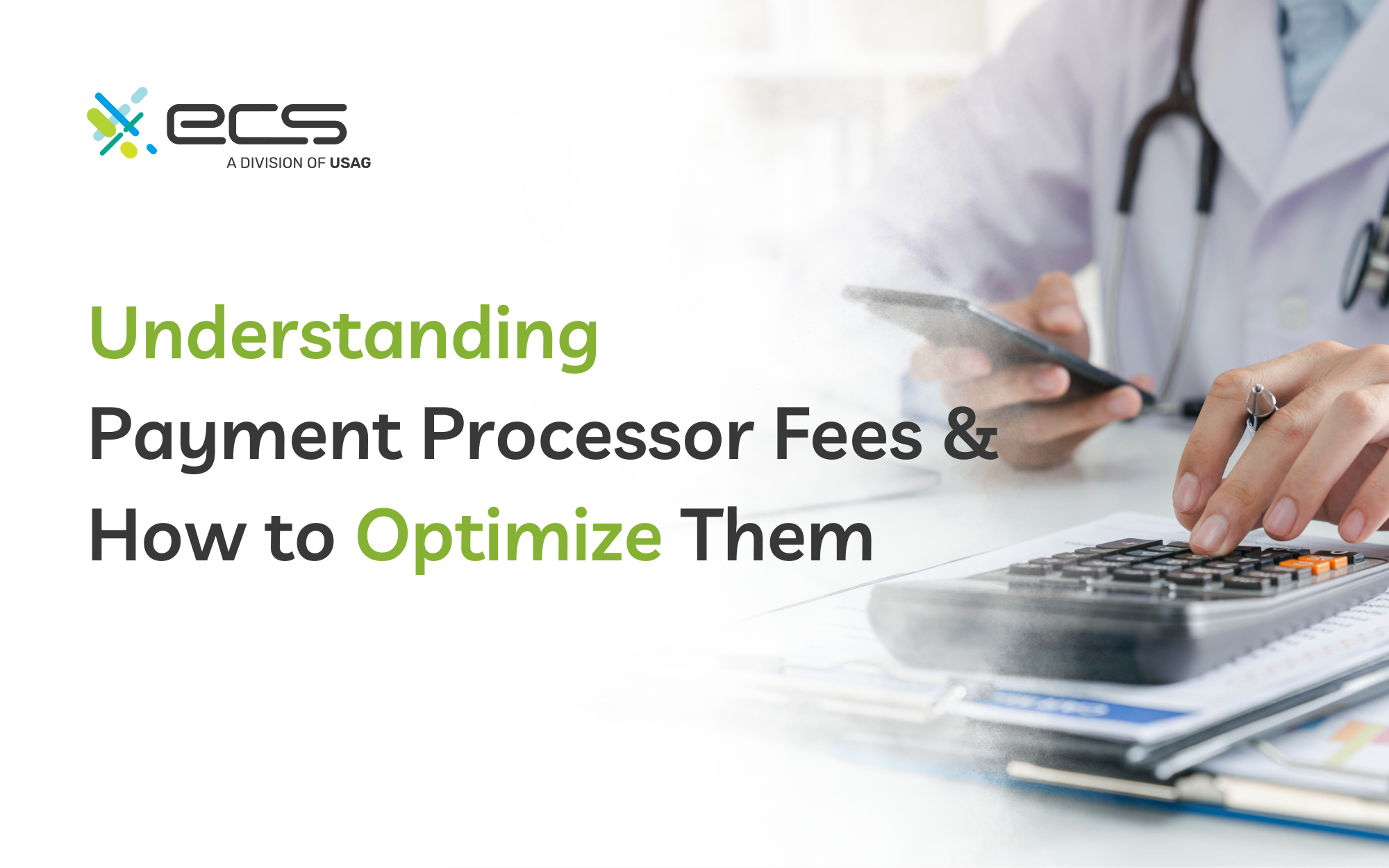If you’re a business owner accepting credit card payments, you’ve probably seen the line items on your monthly statement and wondered: What exactly am I paying for? Understanding payment processor fees isn’t just a matter of accounting, it’s a critical part of running a profitable business. Especially for small businesses, these fees can add up fast and cut into your margins before you even notice.
Whether you’re just setting up a merchant account or have been processing transactions for years, the truth is this: payment processing fees aren’t always as straightforward as they should be. But the good news? Once you know how the system works, you can make smarter choices and save money without compromising service.
Let’s break it down, step by step, and explore how to optimize your payment processing costs effectively.
Why Understanding Processing Fees Is Vital for Profitability
Most business owners don’t get into business to analyze credit card transaction costs. But every time a customer swipes or taps their card, you’re paying a cut of that sale to multiple parties: the credit card issuer, the card network, and your payment processor. All those fees, depending on your pricing structure, can take anywhere from 1.5% to over 3.5% of your sale.
That might not sound like much at first. But when you look at it based on transaction amounts, your perspective might change. When you’re processing thousands, or millions, of dollars a year, payment processor fees become a significant expense. 2% of a $10 sale is only twenty cents, but 2% of a $10,000 sale is $200. A few hundred bucks goes a long way, especially when you add up all your transactions and their fees.
Understanding where your money is going is the first step to getting some of it back.

Breakdown of Payment Processor Fee Types
Let’s break down the three core components of credit card processing fees:
1. Interchange Fees
This is the bulk of your fee. Credit card networks like Visa and Mastercard set interchange rates and the credit card issuer (usually the customer’s bank) receives the bulk of these payments. These rates vary depending on things like the type of card the customer uses (debit vs. credit, rewards vs. non rewards), and how the merchant processes the transaction (in person vs. online).
For example, debit card transactions often come with lower interchange fees than high reward credit cards.
2. Assessment Fees
The card networks (Visa, Mastercard, etc.) set assessment fees. While they’re a smaller part of the total, they’re non negotiable and applied to every transaction.
3. Processor Markup
Here’s where your payment processors make their money. The markup includes any additional fees layered on top of the interchange and assessment. These vary based on the processor, and it’s where you can often negotiate or find better deals.
Understanding this three part structure is essential if you’re serious about reducing payment fees.

Variables That Affect Your Fees
Not every business pays the same payment processing fees. Your fees can vary depending on several key factors:
1. Industry Type
Some industries are higher risk, which results in higher merchant account costs. “Higher risk of what?” you may ask. Industries that may have more chargebacks than others are riskier for financial institutions that back them. High risk industries are also those with more legal ambiguity or controversial products and services such as:
- Adult entertainment
- CBD
- Credit Repair
- Debt consolidation
- Firearms
- Health supplements & nutraceuticals
- Gambling and gaming
- And so forth
2. Risk Level
If your business experiences a lot of refunds, disputes, or chargebacks, processors may charge higher rates to offset their risk. Chargebacks can lead to fines and reputational damage for the merchant, but also financial losses for the banks and processors involved in the transaction. Online gaming or travel businesses may pay more than a local coffee shop due to higher instances of chargebacks in these markets.
3. Card Type
As mentioned earlier, the types of cards used, such as premium rewards cards, can significantly impact credit card processing fees. Debit cards are significantly cheaper. But, corporate or foreign cards? Typically more expensive. Why? Because each type of card had a different interchange rate. Corporate cards offer more rewards for customers, those rewards don’t just come out of nowhere, the credit card companies pay these out to the customers using the interchange fee that the merchant paid to accept a transaction with that card.
Now, be advised, not all merchants will benefit from accepting lower interchange rate cards like standard credit cards and debit cards, (as most standard customers don’t have corporate cards). If your payment provider has you on a flat rate payment structure, you will pay the same rate for every card. That most likely means you’re paying more in processing fees for a debit card or a lower scale credit card than you would on an interchange plus pricing structure.
4. Transaction Volume
Payment processors are always looking for ways to reduce their risk, and one way they do this is by offering better rates to businesses with a steady and predictable income stream. These businesses are less likely to default on payments or cause other financial problems, which makes them more attractive to payment processors. So, if you’re able to scale your business and keep those transactions flowing consistently, you’ll likely qualify for better rates and discounts, and that can lead to big savings on payment processing fees.

How to Optimize and Negotiate Lower Payment Processor Fees
This is where it gets exciting. You can take control of your payment processing fees.
1. Interchange Optimization
Some transactions qualify for lower interchange rates, but only if they’re processed correctly. For example, providing complete Level 2 or Level 3 data (especially in B2B transactions) can unlock lower rates. Some processors help you automate this; others don’t mention it at all.
2. Batch Timing
How you “batch” your transactions at the end of the day can impact your fees. Settling transactions within 24 hours is crucial to qualifying for the best rates.
3. Surcharge Models
While not suitable for every business, some choose to pass along credit card transaction costs to the customer in the form of a surcharge. Surcharges can significantly cut processing costs. But, because surcharges have many legal stipulations, businesses need to implement them carefully and transparently.

Comparing Processors: What to Look For
Choosing the right payment processor can make or break your budget. Here’s what to focus on:
1. Transparent Pricing
Avoid flat rate processors that lump everything into a single rate. While it sounds simple, you’re often overpaying. Instead, look for interchange plus pricing, which transparently breaks down every fee so you know exactly what you’re being charged.
2. Support
Things happen, whether it’s a sudden spike in chargeback fees, a batch issue, or a tech glitch. Choose a partner that offers responsive, knowledgeable customer support.
3. Scalability
As your business grows, maybe you’re adding more locations or expanding your online presence, you need a processor that can grow with you. Make sure your provider can handle multiple merchant services needs across different touchpoints.

Hidden Fees and How to Identify Them
One of the biggest frustrations with payment processors? The dreaded fine print. Here are a few common types of fees you should keep an eye out for:
1. PCI Non Compliance Fees
If you’re not maintaining PCI compliance (a security standard for handling cardholder data), some providers will hit you with monthly fines until you fix it. This fee comes directly from the gateway platform, and not necessarily your payment services company. This is an unavoidable fee, unless you pass your standards test with security metrics.
The credit networks implemented PCI compliance to ensure every business processes credit transactions safely to avoid fraud and eventually chargebacks.
2. Statement Fees
Some processors charge a fee just for sending you a monthly statement, digital or printed. Others will waive it if you ask.
3. Monthly Minimums
Some providers expect you to process a minimum dollar amount each month, or they’ll charge you the difference. This is especially painful for seasonal or slower businesses.
These additional fees, while small, can stack up and significantly raise your overall merchant account costs.

Conclusion: ECS Payments – Reducing Fees Without Sacrificing Service
At the end of the day, payment processor fees are a cost of doing business, but they don’t have to be a mystery or a drain on your bottom line. By understanding where the fees come from, what affects them, and how to negotiate or avoid the unnecessary ones, you can keep more of your hard earned revenue.
That’s where ECS Payments comes in. We specialize in helping small businesses and multi location operators reduce payment fees while delivering reliable, scalable merchant services. We don’t believe in hidden fees. We offer interchange plus pricing, so you know exactly what you’re paying for, and what you’re not.
More importantly, we believe in service. Real people. Real support. Real savings.
If you’re tired of guessing where your money’s going every month, or wondering if there’s a better option out there, it might be time to get a second opinion. Let’s look at your current statement and see how ECS Payments can help lower your credit card processing fees, without sacrificing the service your business deserves.
